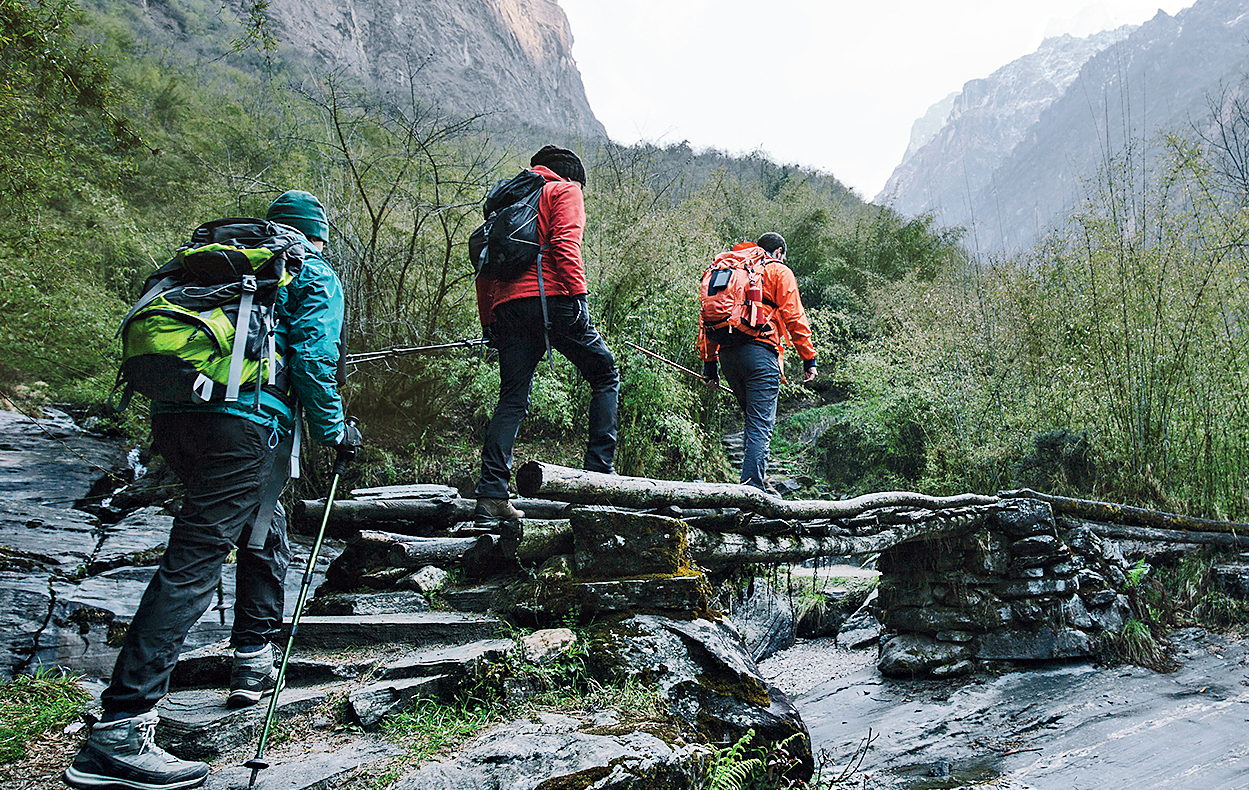I took up trekking well past the age of 50, so I make an effort to keep myself in shape. I stick to a healthy diet and go jogging. I also work out at the gym at least four days a week. Recently, I undertook the rather difficult trek to Sirolsar Lake near the Jalori Pass in Kullu, Himachal Pradesh. At a height of 10,800 feet, it was quite an achievement when I managed to tackle the trek without any trouble.
Many of my younger teammates — some of them half my age — had a hard time negotiating the last few miles. The leader of our pack and seasoned trekking guide, Shubhasish Banerjee, was not surprised. “These guys are all Internet pundits, stuffed with information off their smartphones. When we took up trekking, we blindly followed our leader’s advice,” he said.
In the old days, seasoned trekkers would first interview all aspiring ones. They would ask: Will you be able to survive sub-zero temperatures? Are you used to walking at least five kilometres at a stretch? Is it okay if you don’t get to bathe for a week? Do you smoke? The answers would scare off most, barring the really enthusiastic ones. “Even some of them would lose interest after just two or three expeditions,” says Banerjee.
According to Banerjee, one needs to condition the body and mind before setting off on a tough trek.
Get fit
How do you make sure you are physically fit for a trek? Here are some suggestions from orthopaedic surgeon Dr Kiran Kumar Mukherjee, who is also an avid trekker.
- If you are over 35, get yourself thoroughly checked by a doctor. Find out whether you may have problems at a high altitude and in low temperatures.
- If you are anaemic or obese, get these issues sorted. Otherwise, you may have breathing trouble or your knees may give up.
- Buy a good pair of hiking shoes, high at the ankle and with a firm grip. Put these on along with a long pair of socks and walk for at least half an hour daily. It’s best if you can walk in a grassy field or on non-metalled roads. If you don’t have access to these, walk on a padded treadmill. Keep increasing the speed to prepare your lungs for an arduous journey. But don’t climb steps for conditioning, as this can ruin your knees. This is also the reason you should not walk on the treadmill in an “inclined” mode.
- To strengthen your quadriceps (muscles of the thigh), you need to train with special iron shoes. If you don’t have a trainer, decide on the weight of your shoes after talking to an orthopaedic doctor.
- Try the leg curl to strengthen your hamstring muscles. Also try the tip toe exercise to make your calf muscles stronger. Do it at least 10-15 times at a stretch, three times daily.
- Quit smoking because it may make you breathless. Cut down on alcohol as this gives you an apparent feeling of warmth but actually let’s out heat from the body.
- Make eating light a habit. You have to eat enough to keep you going but not too much. If you are diabetic, talk to the doctor and prepare a diet chart.
Seasoned trekker Manas Ray believes that only after physical conditioning can you work out the logistical details, such as whether you’ll have to hire a porter, make arrangements for tents, or, whether you have to carry all your food. He says, “You must be prepared for inclement weather and remember that you may not be able to abandon your journey, if you feel like it. So prepare your mind for the worst possible situation.”
Bag it
Make a list of all the clothes, woollens and waterproof garments you need. Tick each off as you pack. You may have to miss a bath most days so carry enough toilet rolls, face tissue and sanitiser. Consult your doctor or a seasoned trekker about the medicines you need to pack. You will need a multi-chamber rucksack with properly-padded shoulder and chest straps to pack your stuff in. Make sure it does not weigh more than 15 per cent of your body weight.
Trek right
Even if you are fit, you’ll need two-three days to get used to the high altitude, and possibly low temperature. Ideally, amateur trekkers must climb about 2,000ft per day, acclimatise and then move upwards. According to Banerjee, it is safest for amateur trekkers to not visit places where the temperature goes down below -20° Celsius and one needs to stay in a tent.
- While walking, buckle the pelvic strap of your rucksack tightly to prevent pain in the back or shoulders. If you are not used to walking with a heavy backpack, hire a porter.
- Don’t hurry or walk quickly. Enjoy the beauty of your surroundings. Remember, the journey is often more fascinating than the destination. Also, hurrying can get you exhausted, which you want to avoid at all costs. When you cross a steep incline, climb steadily. You can take the help of a walking stick. If you are not too fit, avoid shortcuts — these are likely to be steep — and stick to the usual path.
If you feel exhausted, there’s nothing wrong in resting for a while. Do a few stretches before you start walking again to prevent muscle pulls.
Eat light
- After you ascend 8,000ft, be extra careful about what you eat and drink. Canned meat or other tinned food may cause indigestion in some people.
- Have a carbohydrate-rich breakfast before setting out in the morning as you will need a lot of energy through the day. Our breakfast of choice was rice with butter, boiled potatoes and eggs. Sometimes we had khichdi, bread and boiled eggs.
- Make sure you stay hydrated. Drink at least three litres of fluid, including warm water, soup, tea, instant soupy noodles and, occasionally, oral rehydration solution. This will help keep exhaustion and muscle pull at bay.
- To keep yourself energised, munch on high-calorie food — dates, almonds, nuts and chocolate.
- It’s better to avoid consuming alcohol on treks. But in case of freezing temperatures, you can have a peg or two of brandy. Exceeding two pegs is dangerous as it can lead to dehydration and related problems.
- Try to go to bed early. You may initially have problems falling asleep at high altitudes but it will get better as you get acclimatised.
Have a great trip.











